Treasure’s Best Games
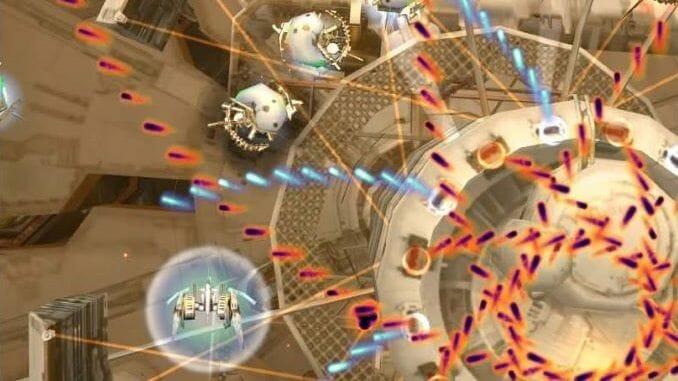
It’s truly a bummer to consider that Treasure, now in their 30th year, might never develop another new game. If that ends up being the case, though, then we’ve at least been left with an absurdly great catalog that’s aged exceptionally well due to Treasure’s development philosophy, in which subverting expectations while pushing both hardware and genre were a focus.
Are you unfamiliar with Treasure’s body of work—they developed 32 games between 1993 and 2014—and want to know where you should begin to familiarize yourself? Or do you just need some motivation to revisit a past worth revisiting? Either way, these are, from where I sit, the 10 best games that Treasure ever developed, and you should find a way to play them all.
Gradius V
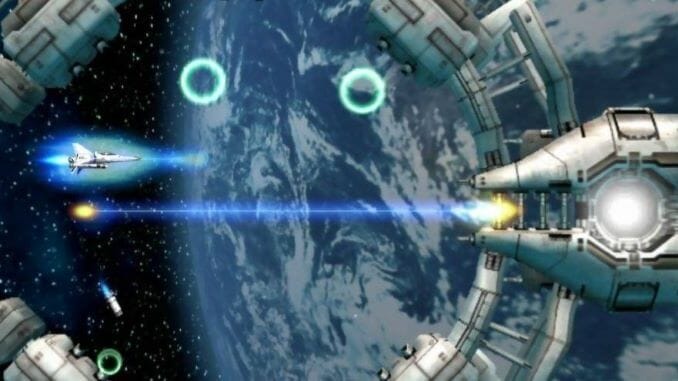
Original release: Playstation 2 (2004)
Available now: Playstation 3 (digital)
Treasure was formed in 1992 by eight (rightfully) disgruntled Konami employees, who were disappointed about their former employer’s focus on franchises and perpetual sequels. Eventually, though, the independent developer partnered up with their old bosses, in order to rejuvenate a classic franchise in need of new ideas.
Gradius V not only switches up the formula of the series enough so that it feels new and vital again, but it’s arguably the pinnacle of the entire franchise—only 1997’s Japan-only Gradius Gaiden is on the same level. As is so often the case in Treasure’s titles, boss fights and difficulty are a major focus: Gradius games in general are not easy horizontal shoot-em-ups, and Treasure rolled with that expectation to develop a boss-heavy experience that managed to make even the open-space levels feel like cramped, claustrophobic corridors due to the influx of bullets and enemies to contend with.
You can now control the ship’s Options yourself, too, which helps you either focus fire on the core of a boss’ ship, or spread your shots around to help take care of enemy vessels and gun placements in areas where it would be hazardous for you to pilot the Vic Viper itself. It doesn’t make the game easier than others in the series, because everything has been rebalanced to account for this extra bit of freedom: you will need to master the use of these Options in order to stretch those extra ships and credits for as long as possible.
Guardian Heroes
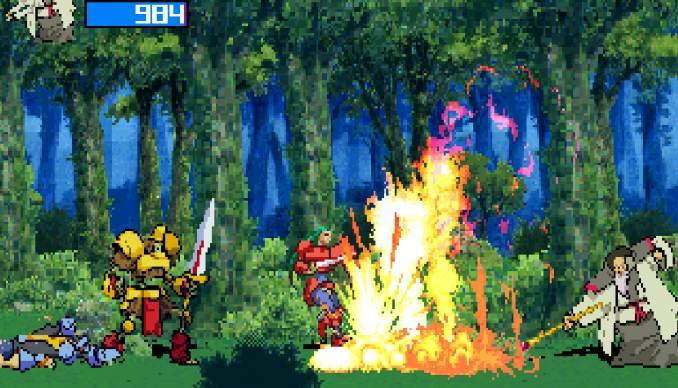
Original release: Sega Saturn (1996)
Available now: Xbox 360/One/Series S|X
While Guardian Heroes isn’t the first beat ‘em up to include RPG elements, it does have a large cast of playable characters (five with their own movesets in story mode, basically everyone you interact with in the game in arcade and battle royale modes), branching storylines that bring you to different stages, enemies, bosses, and endings, genuinely funny dialogue that pokes fun at fantasy and itself, and a whole bunch of enemies to defeat on screen at a time.
This isn’t a game where a couple of NPCs slowly walk into view from offscreen while you tackle them one at a time. Thanks to the power of the Saturn, Guardian Heroes can be a multiplayer affair, meaning you and your friends and your zombie knight armed with a legendary sword who you can give orders to and a number of enemies of varying sizes and abilities will all be on screen at once. There are three different lanes in which you can place your character, too—foreground, middle, and background—with the press of a button, and you have to actually watch how you’re fighting in order to avoid harming civilians. Attacking them lowers your karma and gives you a worse ending.
The game received an optional new coat of paint for an Xbox 360 re-release in 2011, and that also came with quality of life tweaks—like keeping track of which stages you’ve already been to, so you can more easily work on ending up in every stage and unlocking every character—an improved localization, and the ability to speed up cutscenes. It’s still plenty of fun today, and even more so with friends.
Dynamite Headdy

Original release: Sega Genesis (1994)
Available now: Basically everywhere
Dynamite Headdy was critically beloved when it first released back in 1994. Praised for its fresh takes on the platformer, its art style, its graphics, and how it managed to find some order in its chaos once you got the hang of it, it’s also a game that Sega has made sure lived on well past its original system. You can find Dynamite Headdy on the Playstation 3 and Xbox 360 release Sonic’s Ultimate Genesis Collection, or the PS4, Xbox One, Steam, and Nintendo Switch update of that, Sega Genesis Classics. If you have the Expansion Pass subscription for Nintendo Switch Online, you can also find Dynamite Headdy there, and, if you can still find one, the Sega Genesis Mini.
And you should be thrilled that Dynamite Headdy is still this easily available for purchase, because it remains a good time. You play as a puppet named Headdy who is trying to stop the evil King Dark Demon, and you’re going to be throwing your head around to progress, whether it’s at enemies and bosses or just to help you get around. There are 17 other heads to collect in the game that temporarily change Headdy’s abilities—they serve as power-ups that might increase his speed, or restore health, or give him invincibility, or turn Headdy’s noggin into a bomb or hammer.
You can still access the site created to show off the game to potential Wii Virtual Console customers, and it includes artwork and descriptions for each head.
Bangai-O (series) (1999-2011)
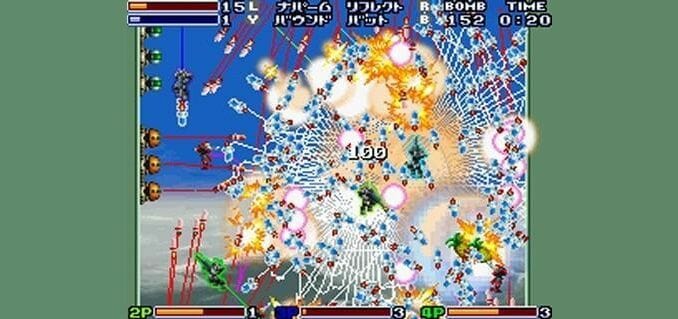
Original release: Nintendo 64, Sega Dreamcast, Nintendo DS, Xbox 360
Available now: Xbox 360
Bangai-O is a series of twin stick shooters that are very much an ode to two things: classic Japanese computer games, and intentionally locking up your hardware by causing just the coolest series of explosions possible. The dialogue is intentionally weird and full of grammatical errors and typos, the characters zany, and the explosions? They are very big.
In the original Japan-only N64 game and its significantly modified—but internationally released—Dreamcast port, you play as a pair of pilots in their mechs, and your goal is to reach the end of the level and defeat the boss there. Simple enough, right? Blow up everything that is blow-uppable, collect the fruit that emerges from the rubble for points and to charge up your lock-on missile gauge, and defeat any enemy mechs that come near you. But if you let enemy missiles get very, very near to you… that’s where the fun begins. A basic lock-on attack with no imminent danger will fire off 40 missiles at once. If a missile is near you, it’ll be 80 missiles. If you are basically a millisecond away from dying in a half-dozen ways, your mech will launch 400 missiles simultaneously to take care of the danger. Understandably, whether it’s your N64 or Dreamcast, there will be slowdown from this. It rules.
Bangai-O Spirits, a DS sequel, has more of a puzzler approach, with stages designed for you to clear them through by destroying everything there is to be destroyed, but not making that task an easy nor obvious one to complete. It’s very different, but also very expansive, with well over three times the number of stages to complete, and the custom level editor still works despite the world moving on from the DS, because Treasure made it a sound-based transfer system: record the sound coming from your system onto your computer, then share the sound file with others, who can then play it for their own DS.
You can’t buy any Bangai-O game on any modern system. Even the (comparatively disappointing) Xbox 360 release, Bangai-O: Missile Fury, isn’t one of the backwards-compatible games available on its successor consoles. You’re going to need to rely on second-hand markets if you want to experience missile mayhem in all its beauty.
Mischief Makers
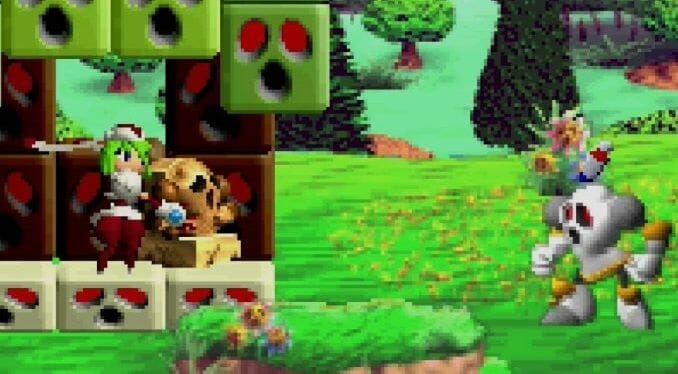
Original release: Nintendo 64
Available now: Nowhere
Mischief Makers released on the Nintendo 64 in 1997, and was nowhere near as appreciated as it should have been. The combination of Treasure deciding to get weird with things and critics’ obsession with fully 3D worlds over 2D side-scrolling ones made Mischief Makers seem disappointing compared to other Treasure titles, but it’s one of the developer’s better outings.
You play as Marina, a robot maid, on her quest to save her kidnapped creator. To do so, you’ll need to master the grab mechanic: you grab onto enemies, obstacles, objects, friends, and more, and you either fling them or yourself, depending on what’s needed at the moment. Or shake them, in order to get health or hidden gems or MacGuffins to fall out of their pockets. You will do a lot of shaking.
The boss fights are a standout, but so too is the structure of the levels: they’re meant to be fully explored in order to discover all of their secrets, but once you know those, you try to complete them again later as fast as possible for the best grade.
Sadly, Mischief Makers has never seen a re-release. It didn’t end up on any of Nintendo’s Virtual Consoles, despite being published by Nintendo in North America, and it has not been announced for the N64 portion of Nintendo Switch Online, either. It’s worth the $35-40 you’ll spend for an actual cartridge, though, because more than just the iconic sound of “Shake, shake!” will stick with you if you play it.
Alien Soldier
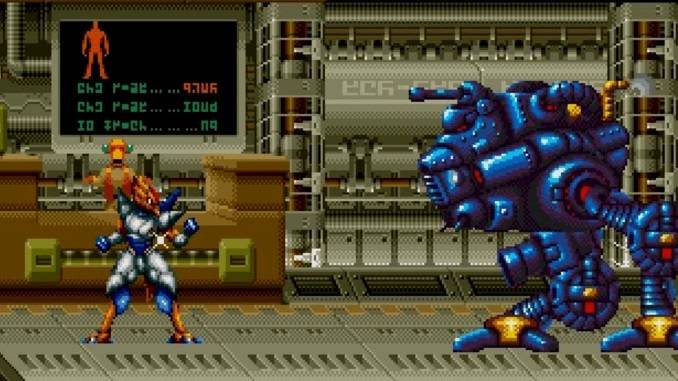
Original release: Sega Mega Drive (1995)
Available now: Basically everywhere
The world we live in is hard and cruel, yes, but have you considered that Alien Soldier can be purchased for 99 cents on Steam? Or that it’s now available on every major console, thanks to Sega finally acknowledging that it rules? Alien Soldier was only available in North America through the Genesis’ “Sega Channel,” an early online content delivery system and subscription service. This is because Sega of America did not think Treasure’s games had mass appeal, and to prove it, they didn’t market them or, in the case of Alien Soldier, even give them a physical release.
Treasure received endless praise for their inventive, challenging boss fights in the years leading up to Alien Soldier, so what they did here was to design an entire game that is just boss fights. The stages in between those bouts take no time at all, and present almost no challenge whatsoever: they exist to let you breathe and to restock your health and ammo. The point of it all, and also what you will spend the vast majority of the game doing, is fighting bosses. Kickass bosses.
This is how the very first encounter works: mere seconds into the game, you must master Epsilon-Eagle’s ability to walk on ceilings, fire at angles, and quick dash at the exact right times in order to avoid damage, or else this first fight will drag on, and you will die. It gets tougher.
Each stage gives you about a minute or two to complete it, and there are 25 of them (and 26 bosses). If it sounds short, well, it only plays that way if you’ve mastered it, and have fun spending hours doing that. No, no, that’s sincerity: it’s a blast, you’ll love it.
Gunstar Heroes
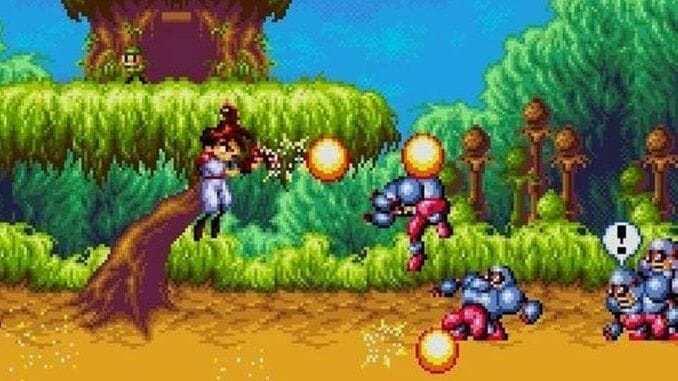
Original release: Sega Genesis (1993)
Available now: Basically everywhere
There might not be a game I have more copies of than Gunstar Heroes, and I will justify every purchase of it to you with ease. (Don’t worry, they’re all digital ones: there’s no collector’s hoarding going on here.) And it’s with good reason, too: it’s one of the best run and gun games ever, and an absolute blast to play nearly 30 years after it first released.
Gunstar Heroes is Treasure’s first game, the one its developers left Konami to make in the first place. And it’s hard to believe that any company would reject this beautiful symphony of bullets, melee, explosions, and boss fights. The boss fights! The battle against Seven Force, which will pit you against a constantly transforming foe, is truly one of the all-time greats of the genre. Just like the game it’s within.
It added health to the genre that Contra helped put on the map, which might seem blasphemous, but all this did was open the game up, both in its gameplay and in coming up with new ways to impede your progress and force you to try again. And you’ll want to: grab a friend for co-op play, then grab some enemies, and throw them into other enemies. Then fire on everything that’s still moving, and enjoy the Genesis’ hardware being pushed to limits Treasure didn’t believe its rival Super Nintendo was capable of.
The definitive edition of Gunstar Heroes, though? That’s on the Nintendo 3DS, courtesy of a port by the master of that sort of thing, M2. It has basically every option you could want, from basics like difficulty to choosing which version of the Genesis’ sound chips you want emulated, or even letting you customize your arsenal and whether or not you can switch between the fixed shooting or run-and-gun modes in-game. Get it before you can’t.
Radiant Silvergun (1998) and Ikaruga (2001)
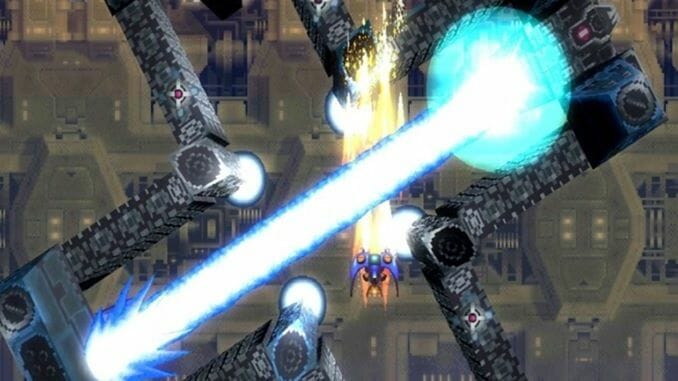
Original release: Sega Saturn; Sega Dreamcast
Available now: Xbox 360/One/Series S|X; Basically everywhere
Rather than re-regale you with the tales of these games—two of the greatest shoot-em-ups ever, which might very well be the most popular picks for Treasure’s finest outing—might I suggest you read a previous feature all about them and what makes the pair so incredible to this day instead?
Sin and Punishment (2000) and Sin and Punishment: Star Successor (2010)
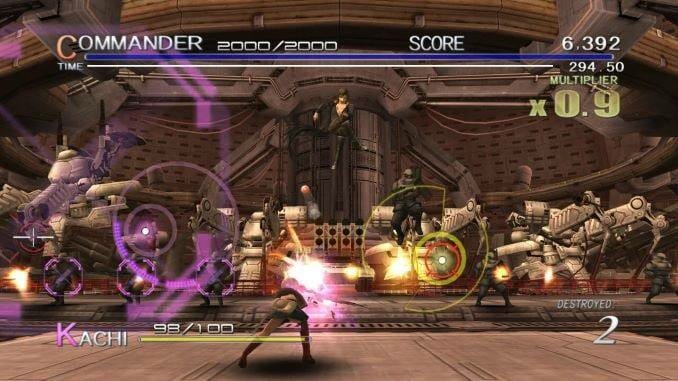
Original release: Nintendo 64; Nintendo Wii
Available now: Wii U, Nintendo Switch; Wii U
Treasure made their name on Sega’s systems, but the relationship didn’t last. While Sega published the studio’s first seven games on their own consoles, Treasure eventually began to release games on Nintendo systems, and in the case of 2000’s Sin and Punishment, even co-developed one alongside the Big N.
It’s a rail shooter, and while it’s brief, it’s also challenging and highly engaging. It was designed from the ground up with the N64’s unique controller in mind, and once you can wrap your head around how it’s supposed to play—using the very rare left/center grips alignment—it plays like a dream. While initially a Japan-only release, Nintendo localized it as a digital import for the Wii Virtual Console, re-released that for the Wii U, and now it’s part of the Nintendo Switch Online service. It’s one of the absolute best games in the N64’s library.
Sin and Punishment was popular enough in its import form, even, that in 2010 Nintendo and Treasure revisited the concept for a new co-developed entry, Star Successor, designed around the Wii Remote’s pointer functionality. Once again a rail shooter, this time you have more freedom of movement and ease of aiming, but Treasure (and Nintendo SPD) made sure to fill the screen with much, much more to shoot at, and much more shooting at you. Which should have been impossible, given how the first game was designed, but they pulled it off all the same.
Everything you liked about the original, there’s more of it in the sequel, and it’s also the superior outing: it’s one of the greatest games not just in Treasure’s library, but in Nintendo’s far more expansive one, too. It’s not possible to reasonably hype something more than that, so, go find a way to play it.
Marc Normandin covers retro videogames at Retro XP, which you can read for free but support through his Patreon, and can be found on Twitter at @Marc_Normandin.